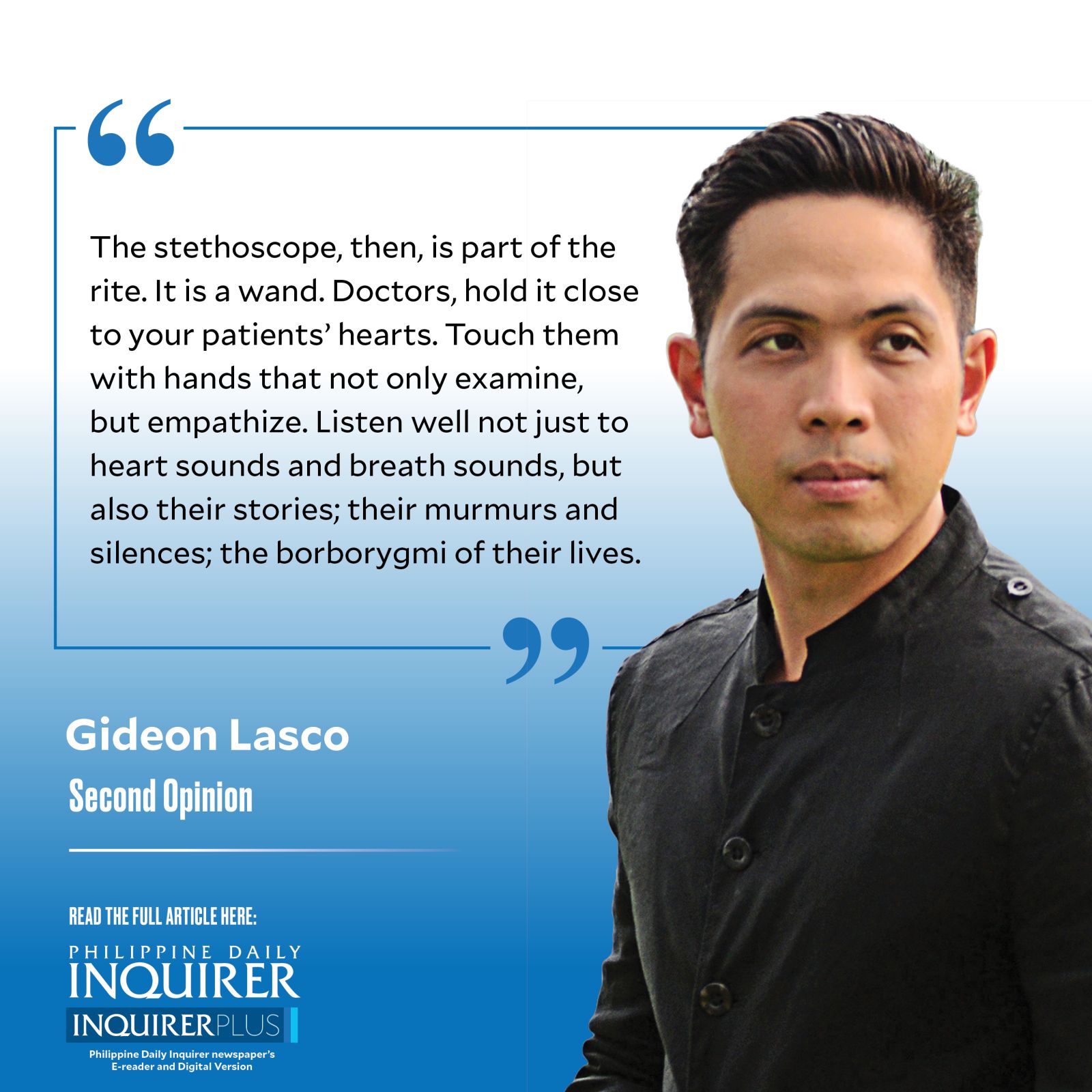Healing touch

Months after I graduated from medical school, Dr. Jaime Galvez-Tan, the former health secretary, offered me an assignment: To travel around the country and interview traditional healers across the archipelago. A longtime advocate for traditional and integrative medicine, Doc Jimmy was enthusiastic over my burgeoning interest in medical anthropology and felt that it was an opportunity for me to explore my career possibilities.I gladly accepted, and ended up interviewing 40 healers from Northern Luzon to Southern Mindanao, with Eastern Visayas in between. Because healing was a living tradition in every municipality, it turned out to be really easy to find people to interview; most of the time, all I did was hop on to a tricycle and ask the driver to take me to the famous hilot, albularyo, tandok, mansipok, or other manggagamot in their barangay.
Even within Metro Manila there were, and surely still are, numerous healers. Two blocks away from the University of the Philippines College of Medicine, I found my first healer, as I wrote back then:
“She was sitting on a wooden chair in a sidewalk in San Andres, Manila. A tall mango tree gave her shade—it also served as her address; the landmark I used to find her. Beside her diminutive figure, a wooden signboard reads: ‘Lola Alice, Hilot.’ This was her clinic and when I introduced myself, she welcomed me warmly.”
Lola Alice did not just share the story of her life, she also diagnosed me as having “usog” when I told her that I wasn’t feeling well at the time, on the basis of what she call “pulsada” (pulse taking). And then she proceeded to perform “hilot,” which involved massaging my back and abdomen as she kept burping, “to draw out the ‘hangin’ (wind)” as she later explained.As with the other interviews, there’s so much to learn from her account about local theories of medicine, but one thing that stood out was the centrality of touch in their art of healing, from the pulsada to the hilot. Many of the other healers also evinced the importance of tactile, especially some kind of massage, typically with a special lana (oil), which is probably why the word hilot refers to the healers themselves.
If we interpret the act of “hilot” as realigning the flow of one’s life force in ways that do not align with Western anatomy or physiology, then the practice resonates with other Asian medical traditions, too, such as the Chinese “qi” and the Ayurvedic “prana.” As the cultural historian Constance Classen notes, the idea of “healing touch” has a long history even in the West, and today, American institutions offer modalities that are surprisingly similar to the logic of hilot, like “therapeutic touch” which according to the website of Mount Sinai Hospital “is based on the idea that good health requires a balanced flow of life energy.” Some researchers are doing scientific researches on massage, finding (or testing) various benefits from pain relief to depression.
We can certainly embrace traditional medicine and explore its applications for our time—including how they can complement biomedicine. But beyond the question of its applicability and efficacy, the act of hilot establishes the physical and emotional connection between the patient and the healer, and this significance of touch is something that holds even greater relevance for medical doctors today.
Now I am not suggesting that doctors should massage their patients or be more “touchy,” but to recognize the value of the tactile in the clinical encounter. Physical examination, for example, is a very tactile act—from pulse taking to palpation to percussion and auscultation. But when was the last time a doctor percussed your lungs? With the advent of various laboratory tests and imaging modalities, the relevance of the physical examination as a diagnostic tool has doubtless diminished, especially in the aftermath of COVID-19 and telemedicine.
Nonetheless, its centrality in patients’ expectations has persisted, which is why they sometimes complain: “Hindi man lamang ako in-examine ni Doc.” This is also why pregnant patients prefer the hilot sa panganganak (traditional birth attendants) who provide postpartum massages and herbal remedies at home, instead of doctors who leave them in the wards to recover by themselves. There is therapeutic value in the symbols and rituals of medicine, from the sight of IV fluids dripping, as though “care” slowly entering the veins, to the white coat that signifies the profession itself. And of course, tactile acts like the physical examination, which serve as connections as meaningful as a therapeutic massage.
The stethoscope, then, is part of the rite. It is a wand. Doctors, hold it close to your patients’ hearts. Touch them with hands that not only examine, but empathize. Listen well not just to heart sounds and breath sounds, but also their stories; their murmurs and silences; the borborygmi of their lives. You will then gain their confidence and trust, and they will go home having received something valuable: if not healing, then at the very least, comfort, and just as surely, care.
—————-
glasco@inquirer.com.ph
###—###




















